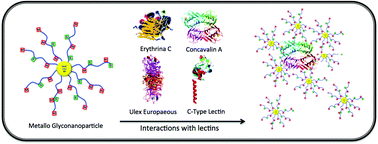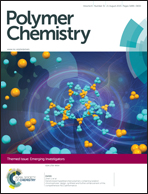Glyconanoparticles and their interactions with lectins
Abstract
Recent progress in nanobiotechnology has allowed the use of glycans and their conjugates as biofunctional molecules for many biological and biomedical applications. Therefore, specific interactions of carbohydrate-binding proteins (lectins) are continuously being elucidated for a deep understanding of their functions and the precise mechanism of their association with specific ligands. New generations of glyconanoparticles with outstanding features that present carbohydrates in a multivalent manner and locally in high concentrations have been showing promise of establishing the glycan code and functioning as a glycan mimic. In the first part of this review article, different types of lectins have been summarised and their main properties highlighted. In the second part, recent successful examples of glyconanoparticles formed of synthetic polymers and in most cases, conjugated with metals, have been discussed in terms of their synthesis and interactions with lectins.

- This article is part of the themed collection: Emerging Investigators

 Please wait while we load your content...
Please wait while we load your content...